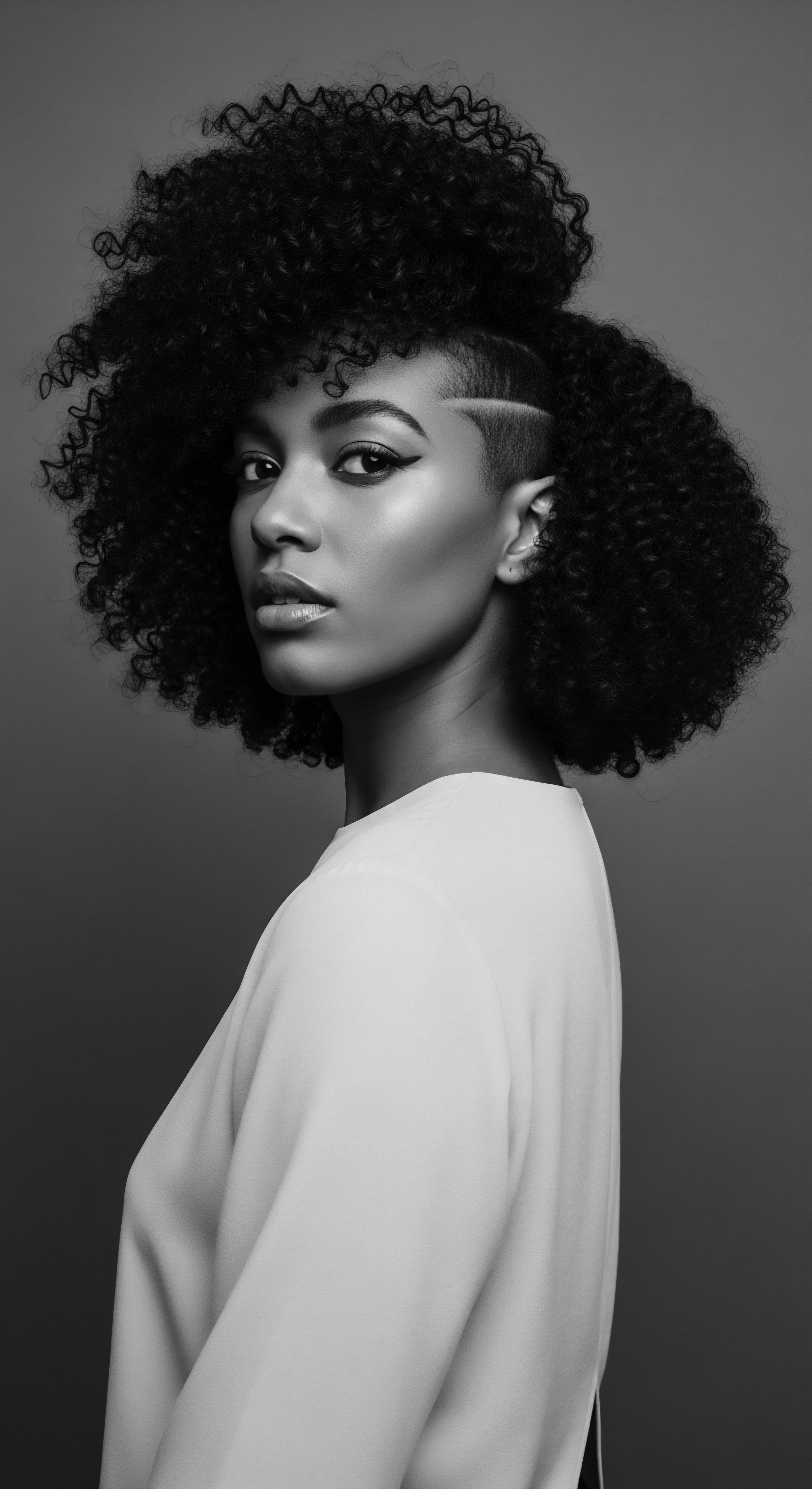
Fundamentals
The concept of Moisture Protection, though often discussed with contemporary scientific language, carries an ancestral echo, particularly for those whose lineage connects to textured hair. At its most straightforward, Moisture Protection is the deliberate and inherent capacity to preserve the vital water content within the hair strand, safeguarding it from the desiccating forces of the environment and the internal processes that invite dryness and brittleness. This fundamental biological imperative is not merely about hydration; it encompasses the safeguarding of hair’s structural integrity, its vitality, and its ability to respond to the world around it.
From the earliest communities, where hair was not just an adornment but a profound marker of identity, status, and spiritual connection, the practice of shielding strands from environmental assault was intuitive. Across diverse landscapes, from the sun-drenched savannas to the humid forest regions, indigenous peoples developed ingenious methods to ensure their hair retained its natural suppleness. This collective wisdom, passed through generations, speaks to an innate understanding of hair’s requirements long before the advent of modern laboratories or chemical analyses.
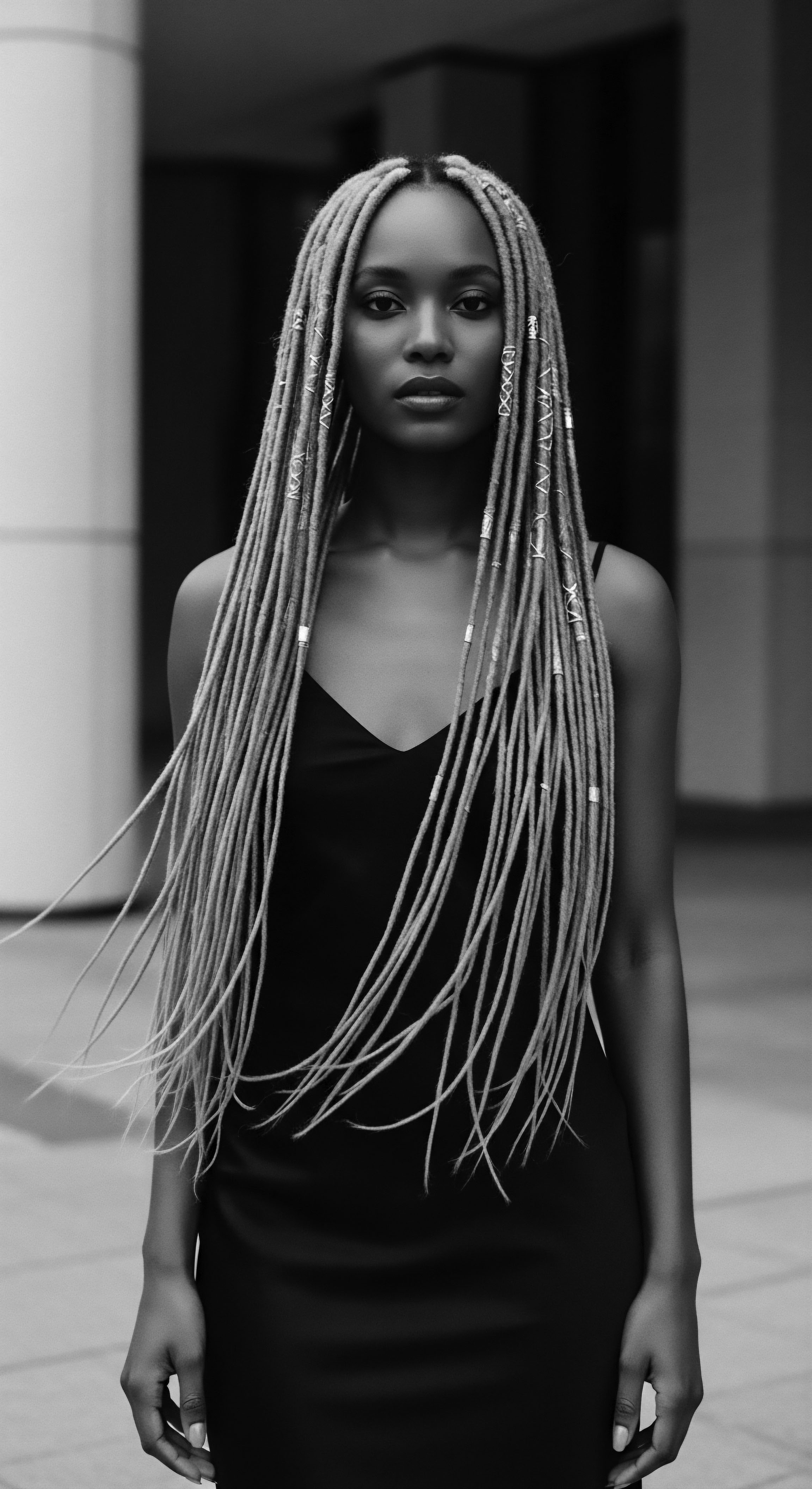
Ancient Guardians of Hair’s Vitality
Long before scientific terms like “cuticle” or “lipid barrier” became common parlance, ancestral communities understood the tangible meaning of Moisture Protection through observation and lived experience. They recognized that hair, especially the tightly coiled or intricately curled varieties, could quickly lose its softness and become susceptible to breakage if left exposed to harsh elements. This observational wisdom led to the creation of practices and the utilization of natural resources that served as the earliest forms of moisture defense.
- Plant-Based Oils ❉ Communities across Africa and the diaspora consistently turned to indigenous plants for their emollient properties. Oils from shea, palm, and coconut, along with others, were applied to hair, forming a protective layer that reduced water evaporation and imparted a healthy sheen.
- Animal Fats ❉ In some regions, animal fats were used, particularly in colder climates, to provide a heavier seal against extreme dryness. This practice, while less common today, highlights the resourcefulness of communities in adapting to their immediate surroundings for hair care.
- Clays and Earths ❉ Certain clays, rich in minerals, were employed not only for cleansing but also for their ability to coat and protect hair, sometimes even aiding in moisture retention through their occlusive properties.
- Protective Styles ❉ Braiding, twisting, and wrapping hair with cloths or scarves were not solely aesthetic choices; they were practical strategies to minimize exposure to sun, wind, and dust, thereby preserving the hair’s moisture content and physical structure.
These practices, deeply woven into daily life and communal rituals, reveal that Moisture Protection was an active pursuit, a constant tending to the hair’s wellbeing, which was inextricably linked to the wellbeing of the individual and the collective. The meaning of hair care extended beyond mere cleanliness; it was a conversation with the environment, a testament to resilience, and a celebration of natural form.
Moisture Protection, at its foundational sense, represents the ancient, intuitive wisdom of safeguarding hair’s water content through practices born from observation and deep reverence for natural vitality.
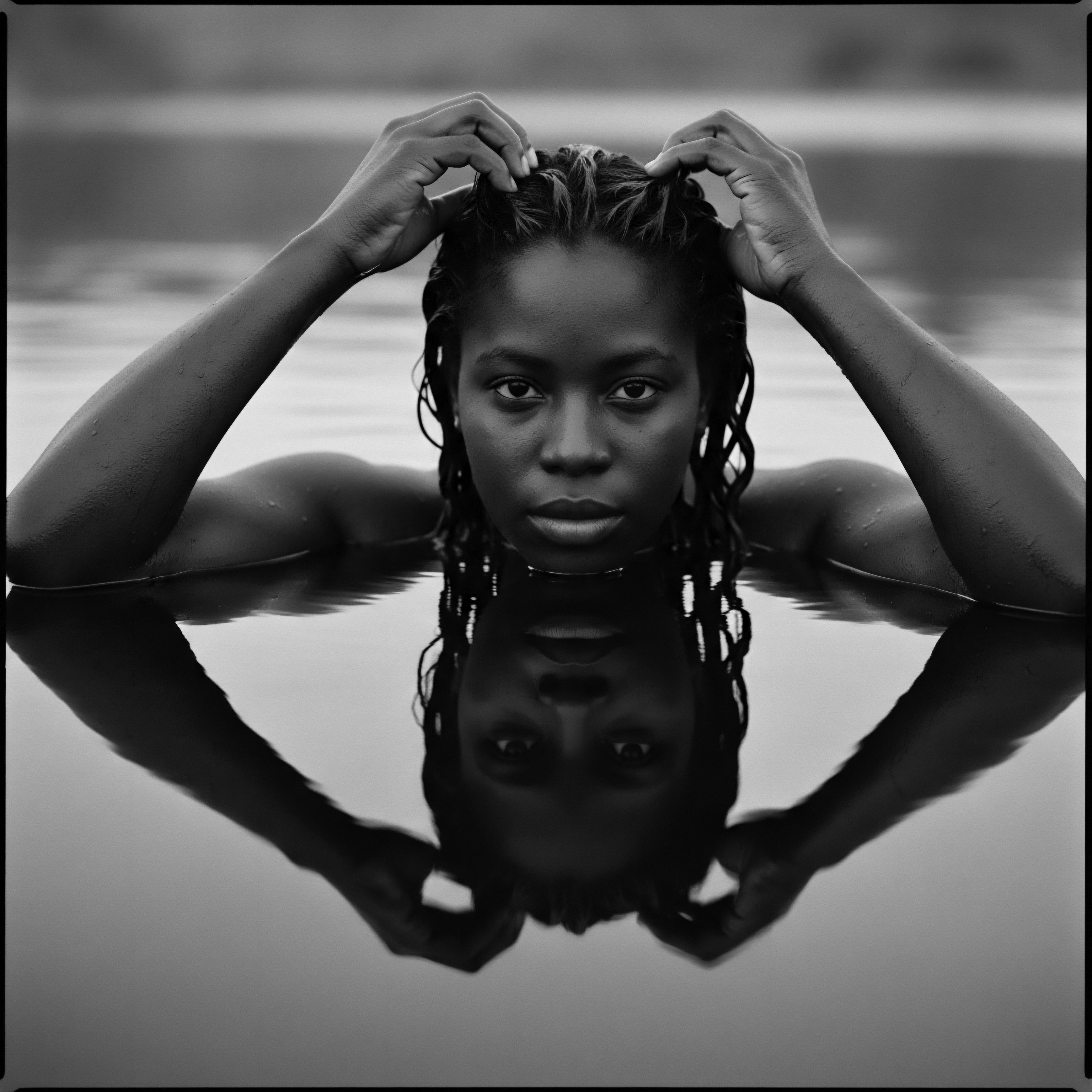
The Hair Strand ❉ A Micro-World of Moisture
To grasp the elemental significance of Moisture Protection, one begins with the hair strand itself. Each strand, seemingly simple, is a marvel of biological engineering. Its outermost layer, the Cuticle, comprises overlapping, tile-like cells.
When these cuticular scales lie flat and smooth, they create a formidable barrier, effectively sealing the inner layers and holding precious water within. Conversely, when these scales are raised or compromised, water escapes readily, leading to dryness, frizz, and vulnerability to damage.
Beneath the cuticle resides the Cortex, the primary mass of the hair, composed largely of fibrous keratin proteins. Keratin, a structural protein, possesses an inherent capacity to bind water, contributing significantly to the hair’s elasticity and pliability. The water content within the keratin matrix directly influences the hair’s strength and flexibility. A healthy hair strand is one that maintains an optimal balance of water, neither excessively dry nor overly saturated, allowing for both strength and responsiveness.
This interplay between the cuticle and cortex forms the biological bedrock of Moisture Protection. Ancestral practices, through their consistent application of oils and butters, intuitively worked to support the cuticle’s integrity, effectively acting as a natural seal to reduce moisture loss. This elemental understanding of protection, though not couched in modern scientific lexicon, laid the groundwork for contemporary hair care philosophies.
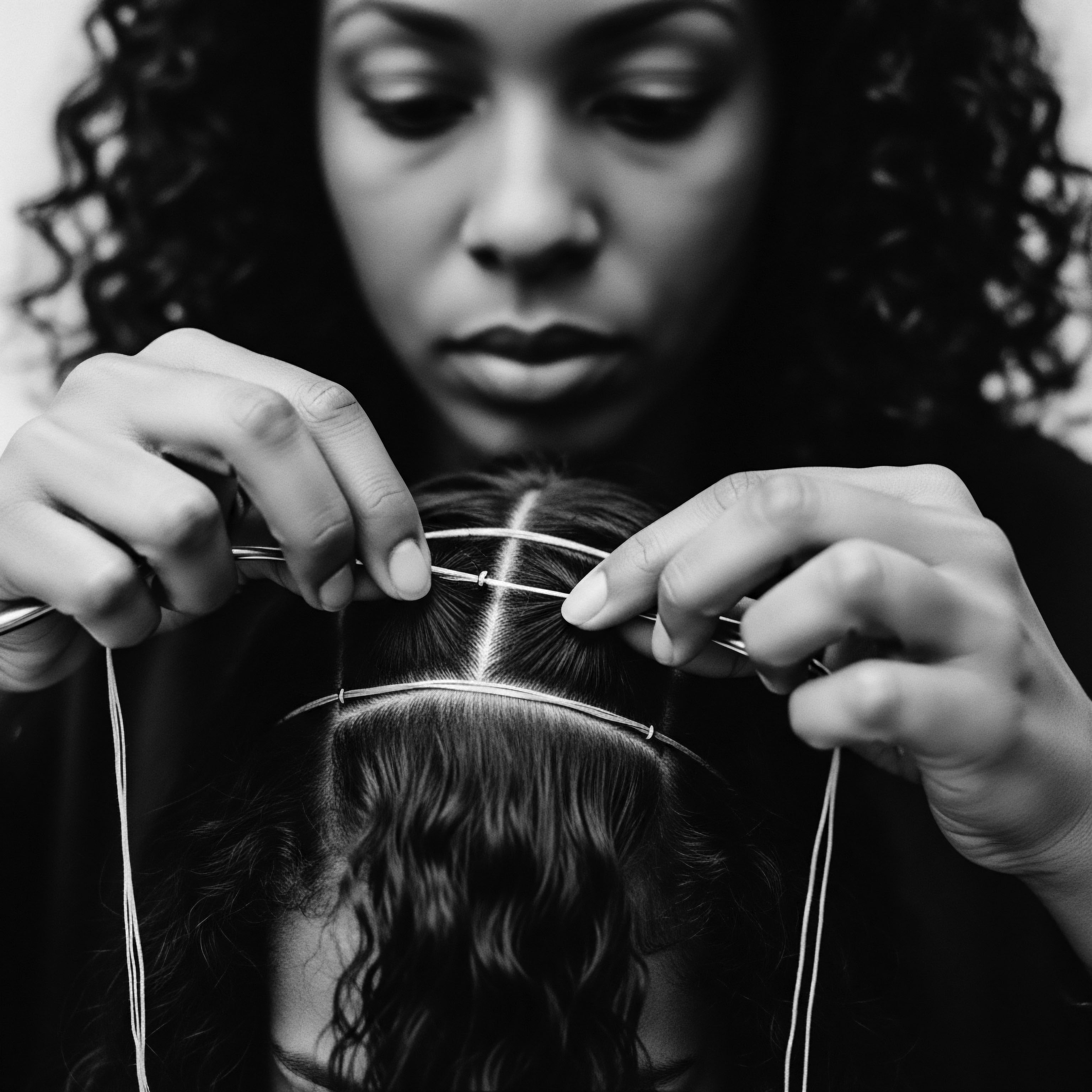
Intermediate
Moving beyond the fundamental biological structures, an intermediate understanding of Moisture Protection delves into the dynamic interplay between hair, its surrounding environment, and the care rituals that have evolved over generations, particularly within the textured hair communities. This deeper appreciation acknowledges that Moisture Protection is not a static state but an ongoing process, influenced by internal biological factors, external atmospheric conditions, and the intentional practices of care that honor hair’s unique heritage.
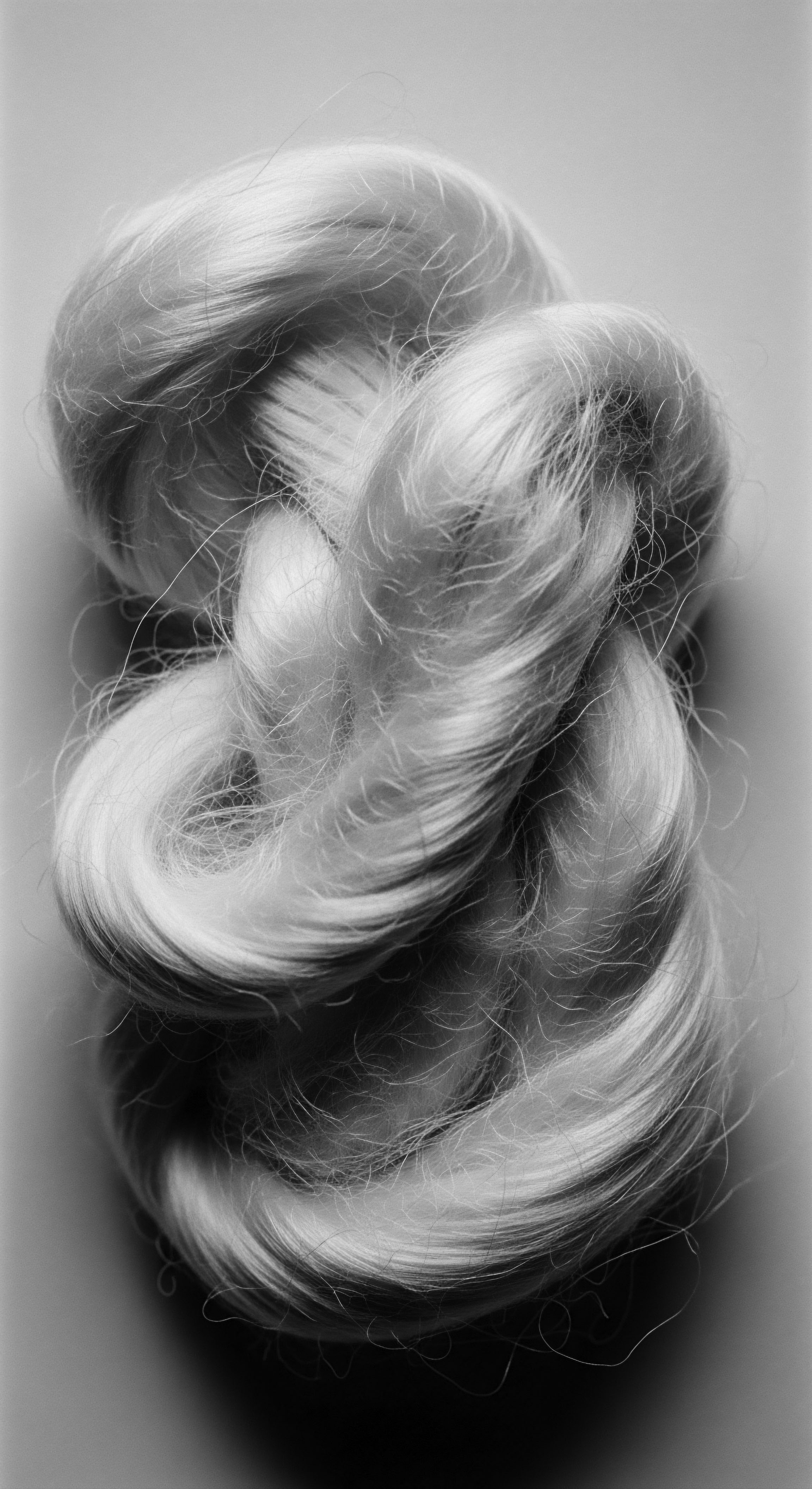
The Hair’s Protective Layers ❉ A Deeper Look
The hair’s primary defense against moisture loss involves two key elements ❉ the Hydrolipidic Film and the Intercellular Cement. The hydrolipidic film, a delicate coating on the surface of the scalp and hair, comprises a blend of sebum (natural oils produced by the sebaceous glands) and sweat. This film acts as a natural barrier, regulating hydration by preventing excessive water evaporation from the hair shaft and guarding against external aggressors like pollution and UV radiation. Its slightly acidic pH also helps maintain a healthy scalp environment, which is crucial for healthy hair growth.
Beneath this external film, within the cuticle layer itself, resides the intercellular cement. This lipid-rich matrix, composed of ceramides, fatty acids, and cholesterol, binds the cuticle scales together, much like mortar between bricks. An intact intercellular cement ensures the cuticle scales lie flat, contributing to the hair’s impermeability and its ability to reflect light, lending it a healthy sheen. When this cement is compromised by harsh chemicals, excessive heat, or mechanical stress, the cuticle scales lift, creating pathways for moisture to escape and making the hair more vulnerable to damage.
Understanding these layers provides a more nuanced perspective on how ancestral practices, often intuitively, worked to support hair’s natural defenses. The application of oils and butters not only mimicked the natural hydrolipidic film but also provided additional lipids that could reinforce the cuticle’s integrity, even if the precise biochemical mechanisms were unknown at the time.
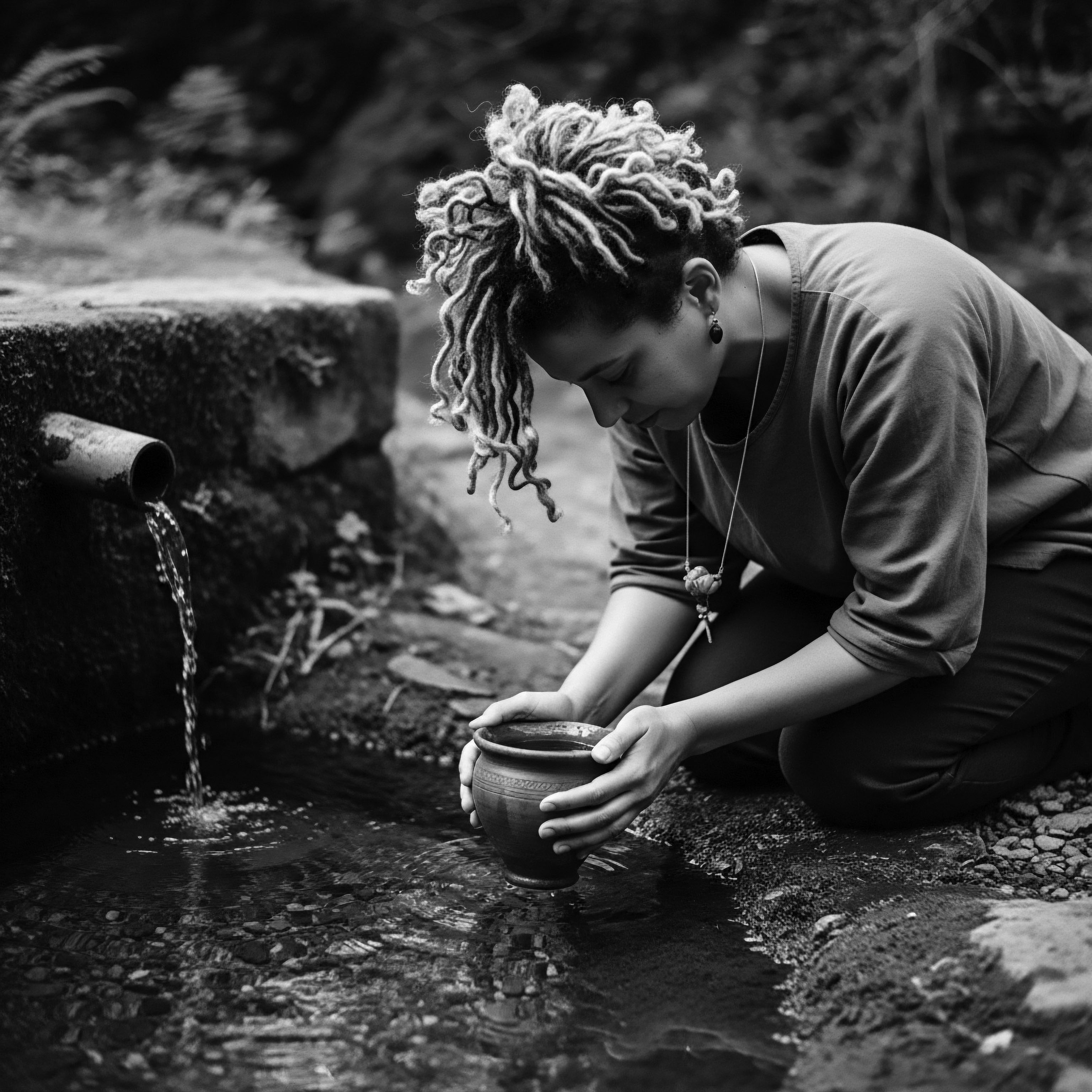
Environmental Dialogues with Textured Hair
Textured hair, with its unique coil patterns and often higher porosity, engages in a distinct dialogue with its environment. The natural twists and turns of curly and coily strands make it more challenging for sebum, the scalp’s natural oil, to travel down the entire length of the hair shaft. This inherent characteristic contributes to textured hair’s propensity for dryness, making diligent Moisture Protection a particularly vital aspect of its care.
Environmental factors significantly influence hair’s moisture balance:
- Humidity ❉ High humidity can cause hair fibers to swell as they absorb moisture, leading to frizz and a loss of curl definition. Conversely, low humidity can lead to dryness and static electricity.
- Temperature Extremes ❉ Both arid cold and intense heat challenge hair’s ability to retain moisture, necessitating adaptive care strategies.
- Pollution ❉ Airborne pollutants can cling to hair, dulling its luster and leading to dryness and brittleness by stripping natural oils and damaging the cuticle.
- Water Quality ❉ Hard water, with its high mineral content, can leave deposits on hair, making it difficult to maintain moisture and leading to a rough texture.
For generations, communities with textured hair developed adaptive responses to these environmental challenges. Head coverings, often culturally significant, served a dual purpose of adornment and protection from the elements. The consistent use of natural emollients was a direct response to the hair’s tendency towards dryness in various climates. These adaptive practices represent a living library of Moisture Protection strategies, born from centuries of observation and communal knowledge.
Hair’s moisture retention is a dynamic dance between its internal structures, external conditions, and the adaptive care practices developed over generations within textured hair communities.
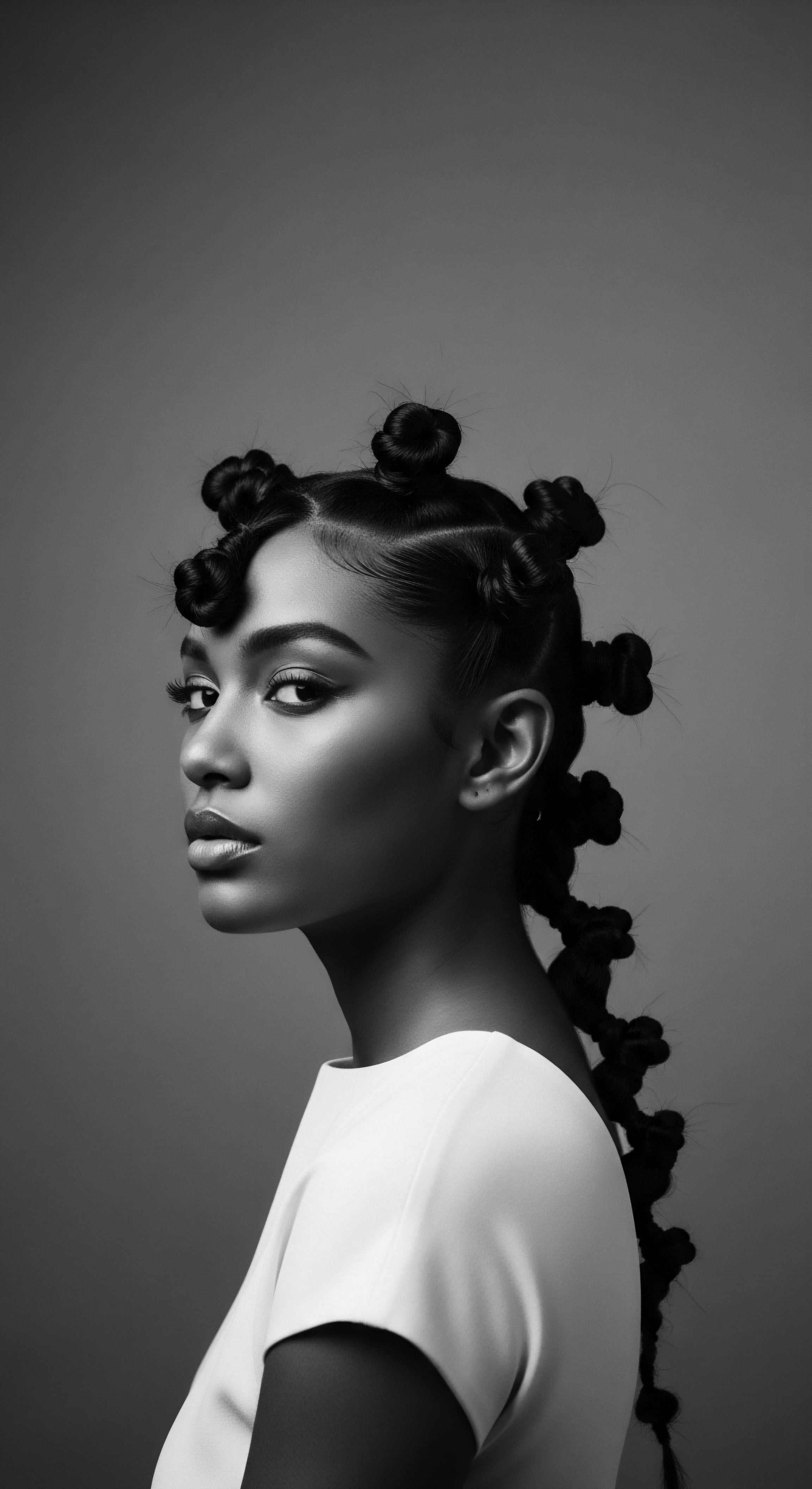
Ancestral Wisdom and Modern Affirmations
The ingenuity of ancestral hair care practices for Moisture Protection is increasingly affirmed by contemporary scientific understanding. The traditional practice of “oiling” or “greasing” the scalp and hair, common among African and diasporic communities, serves to add moisture and seal it within the hair shaft. This aligns with the modern understanding of occlusive agents that create a barrier to prevent water loss.
Consider the widespread use of Shea Butter (from the Vitellaria paradoxa tree) in West Africa. For thousands of years, this natural butter has been a staple for moisturizing and protecting both skin and hair. Its rich composition of fatty acids allows it to penetrate the hair, providing deep conditioning and sealing moisture, especially for tightly coiled textures. This traditional application of shea butter is a powerful example of an ancestral practice that directly addresses the unique moisture needs of textured hair, validated by its long-standing efficacy and recent scientific analysis of its lipid profile.
| Traditional Practice (Echoes from the Source) Oiling/Greasing ❉ Application of plant-based oils (e.g. shea, coconut, palm) or animal fats. |
| Contemporary Understanding (The Unbound Helix) Occlusion/Emollience ❉ Forms a lipid barrier on the hair surface, reducing transepidermal water loss and smoothing the cuticle. |
| Traditional Practice (Echoes from the Source) Protective Styles ❉ Braids, twists, wraps, head coverings. |
| Contemporary Understanding (The Unbound Helix) Physical Shielding ❉ Minimizes environmental exposure (UV, wind, pollution) and reduces mechanical friction, preserving cuticle integrity. |
| Traditional Practice (Echoes from the Source) Gentle Cleansing ❉ Use of natural clays or infrequent washing. |
| Contemporary Understanding (The Unbound Helix) pH Balance/Sulfate Avoidance ❉ Preserves the hair's natural hydrolipidic film and prevents excessive cuticle lifting. |
| Traditional Practice (Echoes from the Source) Herbal Infusions ❉ Use of botanical extracts in water-based rinses. |
| Contemporary Understanding (The Unbound Helix) Humectants/Conditioners ❉ Draws and binds water to the hair, or provides film-forming agents for surface smoothing. |
| Traditional Practice (Echoes from the Source) The enduring wisdom of ancestral hair care practices often aligns with modern scientific principles of Moisture Protection, demonstrating a continuous lineage of hair understanding. |
The practice of African Threading, a technique used in West and Central Africa, involved wrapping hair with thread to stretch and protect it, simultaneously aiding in length retention and minimizing manipulation that could lead to moisture loss and breakage. These methods were not random; they were sophisticated systems of care that considered the hair’s unique structural properties and its environmental vulnerabilities.
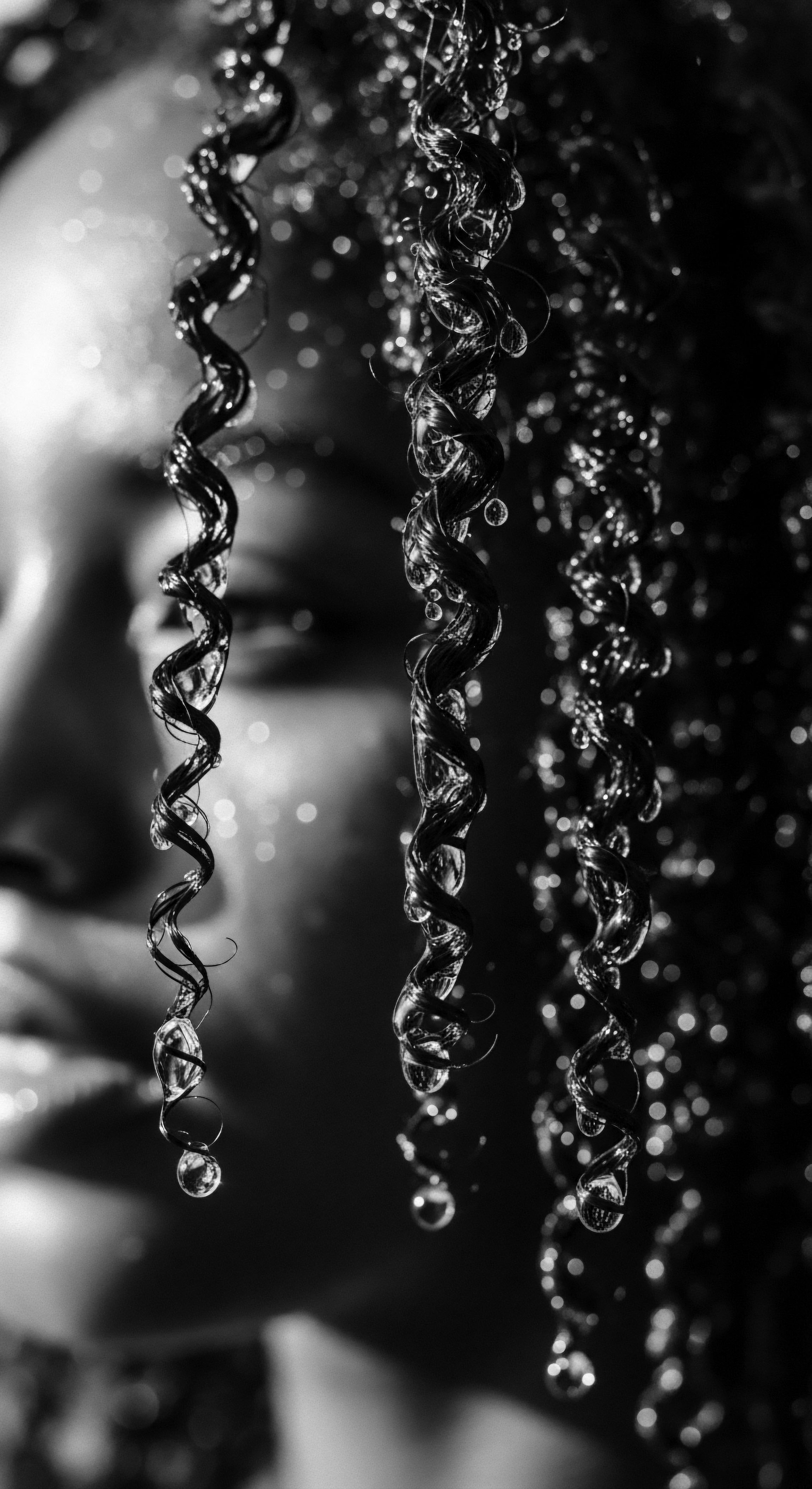
Academic
The academic definition of Moisture Protection for textured hair transcends rudimentary explanations, delving into the biophysical mechanisms, the socio-historical contexts that have shaped its meaning, and the complex interplay of internal and external factors influencing its efficacy. It is a concept deeply rooted in both trichology and cultural anthropology, particularly pertinent to the experiences of Black and mixed-race individuals whose hair has been a canvas for identity, resistance, and ancestral memory.
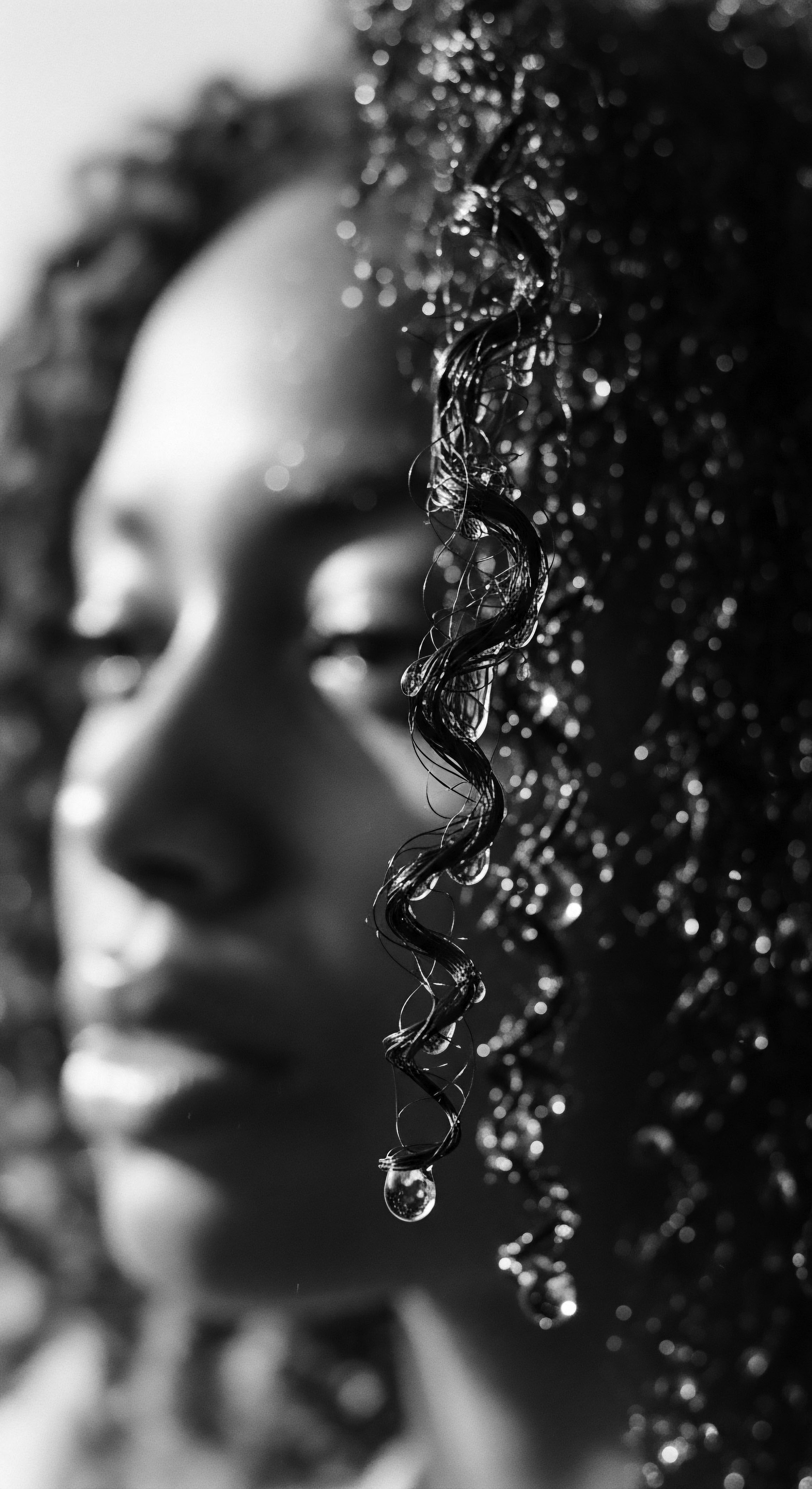
A Precise Delineation of Moisture Protection
Moisture Protection, in a rigorous academic sense, denotes the comprehensive suite of biological attributes and applied practices engineered to optimize and sustain the intrinsic hydration levels of the hair fiber, thereby preserving its mechanical integrity, sensory characteristics, and aesthetic presentation. This involves a synergistic interplay between the hair’s native lipid layers, the structural organization of its keratinized proteins, and the judicious application of exogenous agents that either replenish lost water, mitigate its escape, or provide a protective barrier against environmental stressors. For textured hair, characterized by its helical geometry and often higher porosity, this protective imperative is amplified due to inherent structural predispositions to moisture depletion.
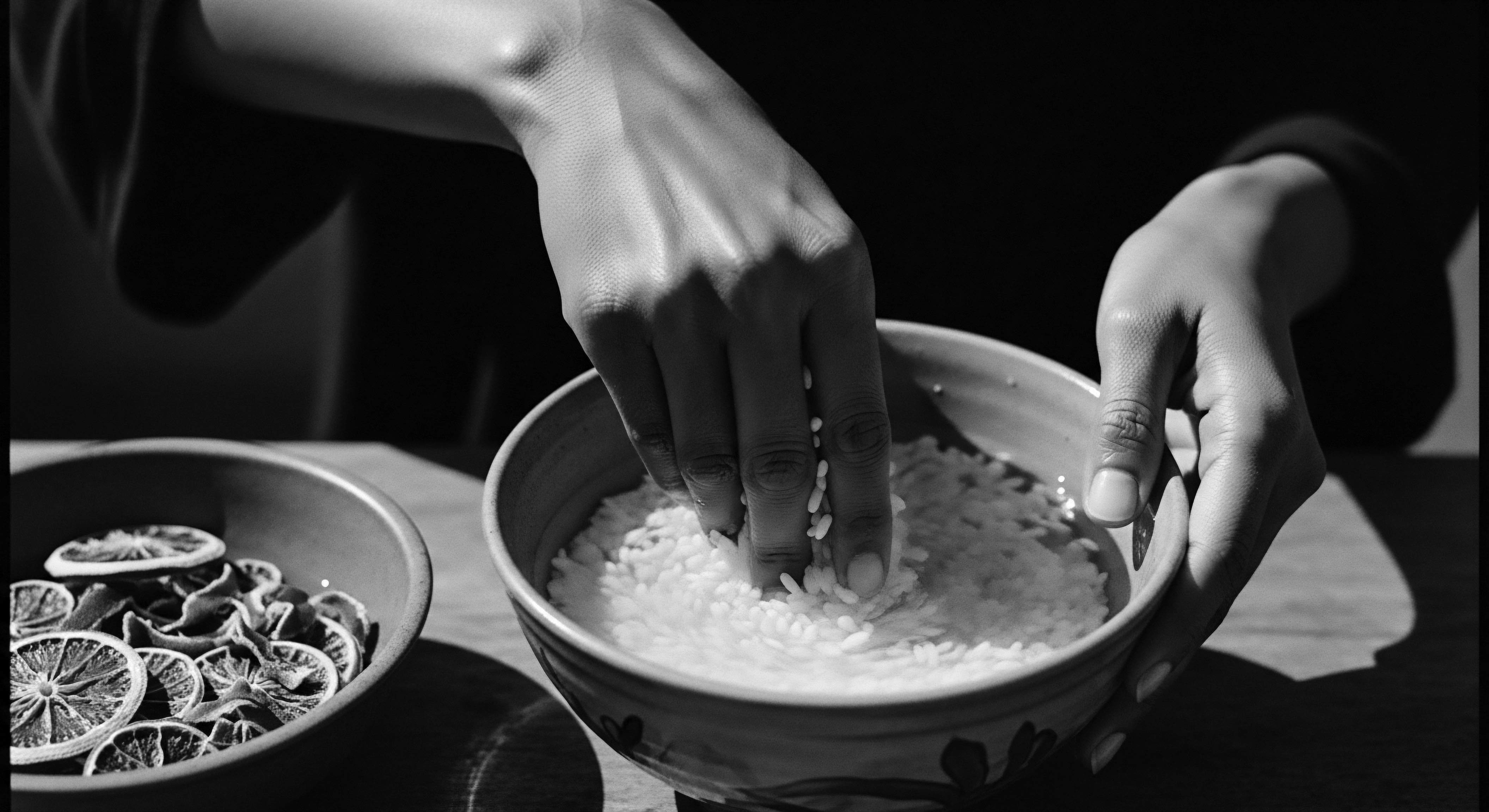
Biophysical Mechanisms of Hair Hydration and Retention
The hair shaft’s capacity for moisture protection is fundamentally governed by its layered architecture. The outermost Cuticle, a series of overlapping keratinized cells, acts as the primary gatekeeper. The integrity of this cuticular layer is paramount; when its scales lie flat and cohesive, facilitated by the Cell Membrane Complex (CMC) and the external F-Layer (a hydrophobic lipid layer), water egress is significantly impeded. Damage to the cuticle, often induced by mechanical stress, chemical treatments, or excessive heat, compromises this barrier, leading to elevated porosity where water can both enter and exit the hair fiber with greater ease, resulting in rapid dehydration.
Beneath the cuticle, the Cortex, composed predominantly of alpha-keratin proteins, holds the bulk of the hair’s water content. Keratin’s hygroscopic nature allows it to absorb water, leading to swelling and increased pliability. Optimal hydration within the cortex is crucial for maintaining the hair’s elasticity, strength, and resistance to breakage. Disruptions to the keratin structure, such as the breakage of disulfide bonds or hydrogen bonds, can alter the hair’s ability to retain water and its mechanical properties.
The Hydrolipidic Film, a dynamic emulsion of sebum and sweat on the scalp and hair surface, contributes to this protective schema by forming a superficial barrier that retards transepidermal water loss. This film also possesses a slightly acidic pH, which helps to maintain the integrity of the cuticle and inhibit microbial proliferation on the scalp, thereby indirectly supporting hair health and moisture retention.
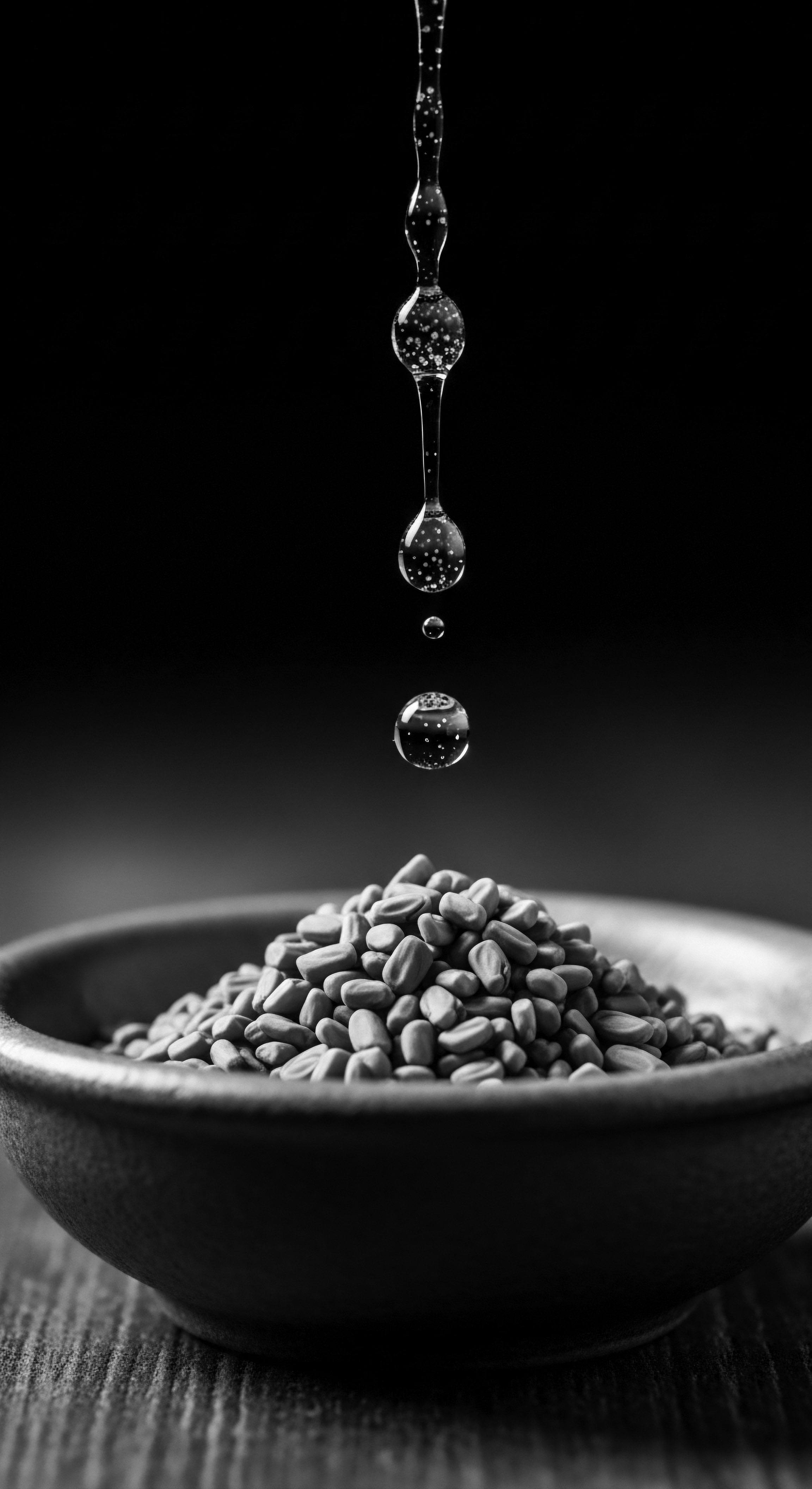
Socio-Historical Contexts of Moisture Protection in Textured Hair
The discourse surrounding Moisture Protection for textured hair cannot be divorced from its socio-historical roots, particularly the experiences of individuals of African descent. Prior to the transatlantic slave trade, hair care in Africa was an elaborate and culturally significant practice, with styles and products often signifying identity, status, and spiritual connections. Natural butters, herbs, and oils were consistently applied to hair to assist with moisture retention, a practice rooted in generations of empirical knowledge about hair’s unique needs in diverse climates.
The brutal disruption of slavery severed many of these traditional practices, forcing enslaved individuals to adapt with limited resources. Yet, the imperative of Moisture Protection persisted as a silent act of resilience. Enslaved women, stripped of their cultural identities, continued to utilize available materials—such as natural oils, animal fats, and even repurposed clothing for headscarves—to moisturize and protect their hair from the harsh conditions of plantation life and environmental exposure. This adaptation speaks volumes about the deep-seated understanding of hair’s vulnerability and the enduring drive to preserve its health, even in the face of profound adversity.
The academic interpretation of Moisture Protection for textured hair acknowledges its complex biological underpinnings and its enduring cultural significance as a practice of resilience and identity preservation across generations.
The post-slavery era and subsequent periods saw the emergence of a beauty industry that often promoted Eurocentric beauty standards, leading to the widespread use of chemical straighteners that fundamentally altered hair structure and, paradoxically, often exacerbated moisture loss. However, the innate need for Moisture Protection continued to shape hair care practices within Black communities, even as the methods evolved. The rise of the “natural hair movement” in the late 20th and 21st centuries represents a powerful reclamation of ancestral wisdom, with a renewed emphasis on practices that prioritize moisture retention and the health of natural textures.
A notable historical example illustrating the cultural significance of Moisture Protection, particularly for textured hair, can be found in the traditional practices of the Himba Women of Namibia. Their iconic hairstyle, known as “otjize,” involves coating their hair (and skin) with a mixture of butterfat, ochre, and aromatic resins. This practice, passed down through generations, serves multiple purposes ❉ it protects the hair and skin from the harsh sun and dry desert winds, acts as a cleanser (as water is scarce), and holds profound cultural and aesthetic meaning. While seemingly simple, the consistent application of this lipid-rich mixture represents a sophisticated, centuries-old system of Moisture Protection that directly addresses the unique challenges of their environment and hair type, ensuring the vitality and appearance of their strands without relying on frequent washing.
This practice, documented in various anthropological studies (e.g. Friedman, 2005), exemplifies how traditional societies developed highly effective, culturally embedded methods for maintaining hair hydration and health under extreme conditions, validating the deep connection between ancestral wisdom and optimal hair care.
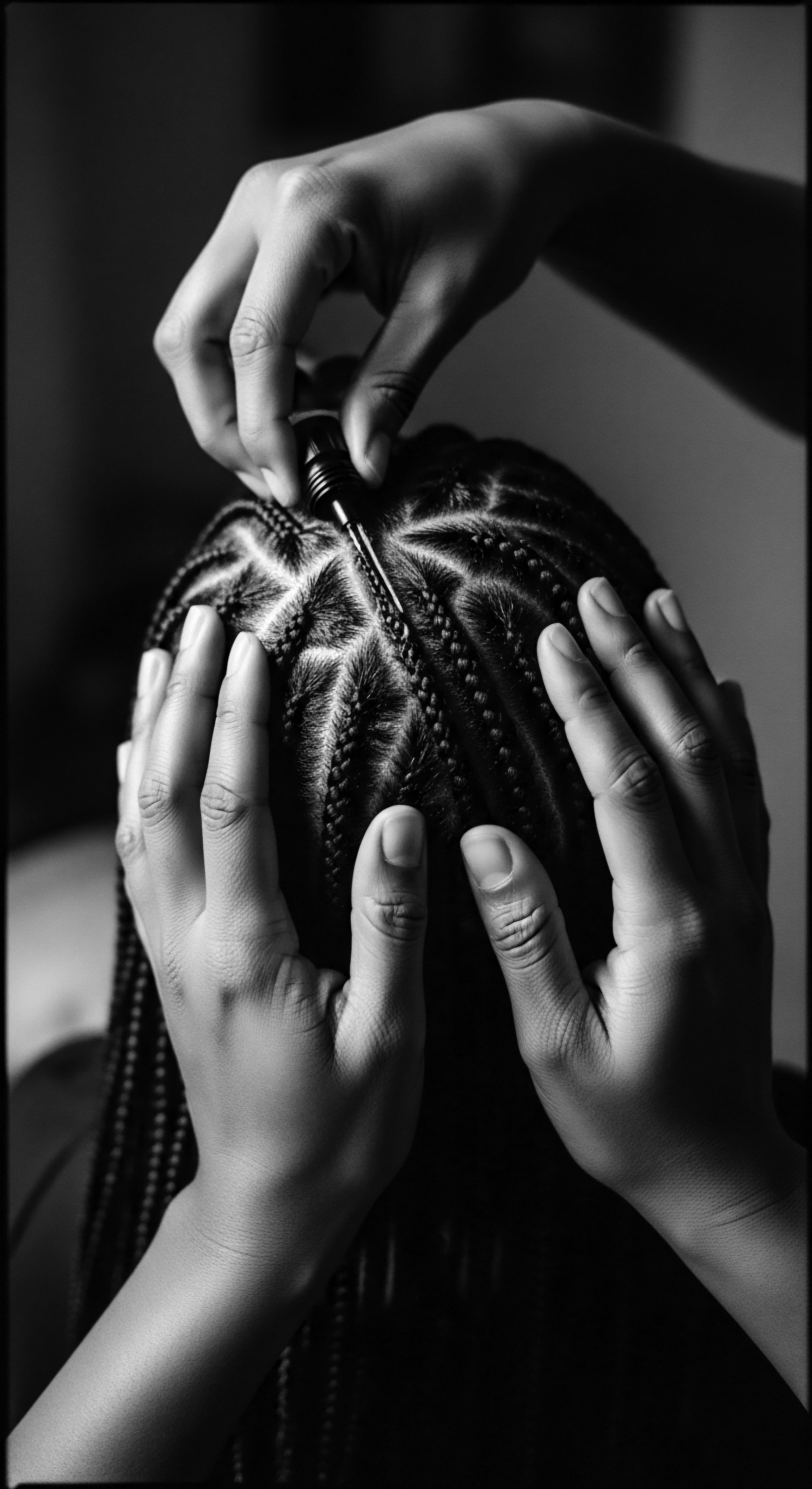
The Intersection of Science and Heritage in Contemporary Care
Modern hair science has validated many of the traditional approaches to Moisture Protection while also offering new insights into the intricate molecular mechanisms involved. The unique morphology of textured hair, including its elliptical cross-section and numerous bends, contributes to a less uniform distribution of sebum along the hair shaft and an increased susceptibility to cuticle lifting, making it more prone to dryness. This structural reality underscores why practices like regular oiling and sealing, which were intuitively adopted by ancestors, are now scientifically recommended for maintaining hydration in textured hair.
- Lipid Reinforcement ❉ The application of oils and butters, particularly those rich in fatty acids like shea butter, helps to replenish the hair’s external lipid layer (F-layer) and the intercellular cement, thereby strengthening the cuticle’s barrier function against water loss.
- Humectant Integration ❉ Contemporary formulations often incorporate humectants (e.g. glycerin, hyaluronic acid) that draw water from the environment into the hair, providing internal hydration, while emollients and occlusives then seal this moisture in.
- PH Optimization ❉ Products formulated with a balanced pH help to keep the cuticle scales flat and closed, minimizing porosity and enhancing moisture retention.
- Protein-Moisture Balance ❉ Understanding the interplay between protein and moisture is vital. While keratin is essential for hair strength, an imbalance can lead to stiffness or breakage. Moisture Protection ensures the hair remains pliable and resilient by maintaining adequate water content within the protein matrix.
The academic understanding of Moisture Protection thus represents a convergence of biological necessity, historical adaptation, and cultural continuity. It is not merely a technical specification but a concept imbued with the legacy of resilience, self-preservation, and the enduring celebration of textured hair’s inherent beauty and strength.

Reflection on the Heritage of Moisture Protection
As we close this exploration of Moisture Protection, a concept both elemental and infinitely complex, we are reminded that its meaning extends far beyond scientific diagrams or product labels. It is a concept steeped in the very soul of a strand, carrying the echoes of ancestral wisdom and the resilient spirit of generations. The journey of Moisture Protection, from its earliest intuitive understandings to its modern scientific delineations, mirrors the enduring story of textured hair itself – a story of adaptation, defiance, and beauty.
The hands that first pressed shea butter into coiled strands, the communities that devised intricate braiding patterns to shield their hair from the elements, the voices that passed down remedies through whispered teachings – these are the true architects of Moisture Protection. Their practices were not just about physical preservation; they were acts of self-care, cultural affirmation, and a silent protest against forces that sought to diminish their identity. Hair, protected and honored, became a symbol of unbroken lineage, a vibrant testament to an enduring spirit.
Today, as we seek to understand the precise mechanisms of lipid barriers and keratin hydration, we walk in the footsteps of those who intuitively knew. We honor their ingenuity by recognizing that the best of modern science often affirms the profound wisdom of our forebears. The Moisture Protection we seek for our textured hair is not a new invention but a continuation of a sacred dialogue between our strands and the world, a dialogue that has spanned centuries and continents. It is a living legacy, asking us to listen, to learn, and to carry forward the tender thread of care for the unbound helix that crowns us.
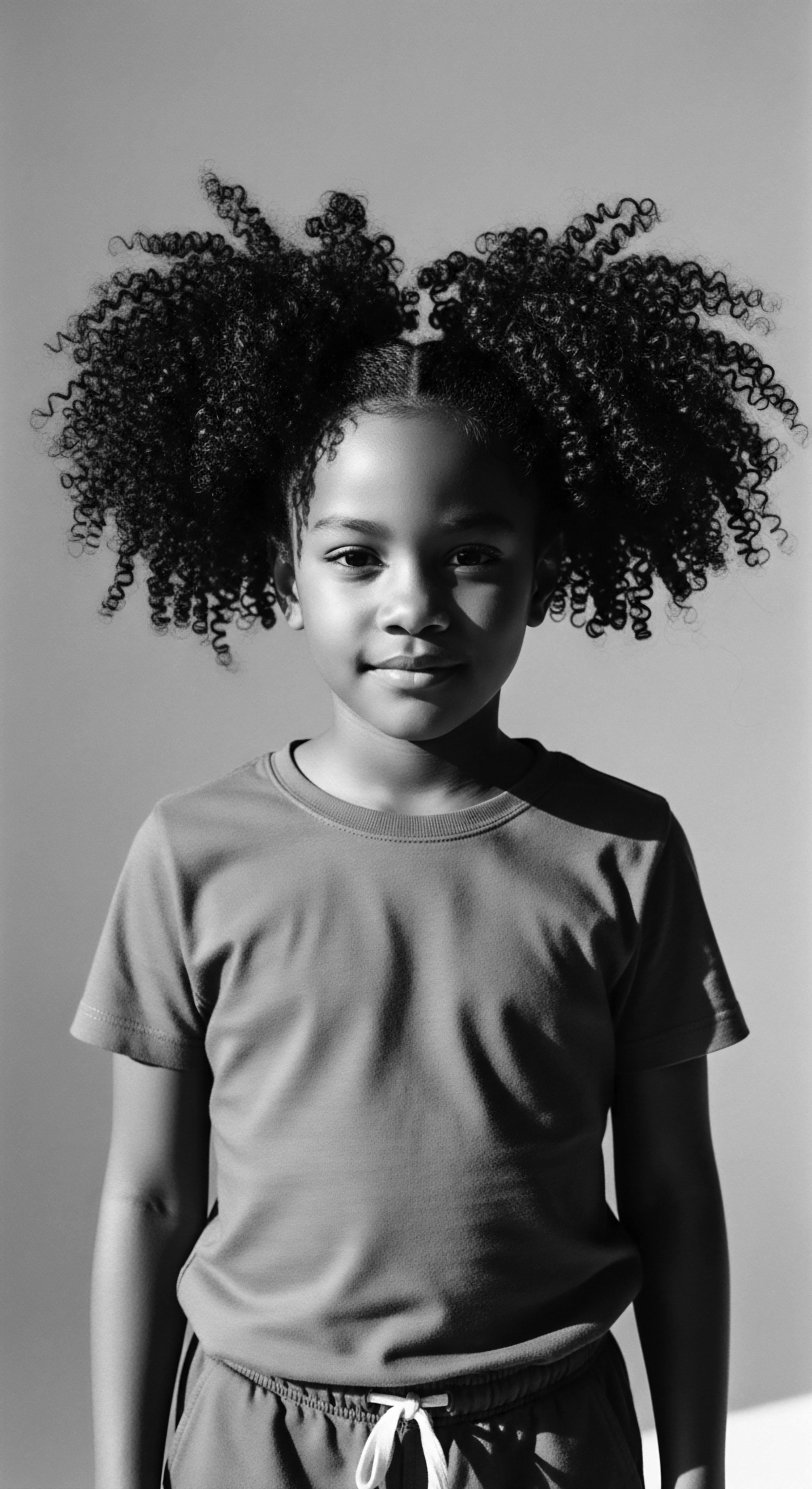
References
- Fletcher, J. (2016). Hair in Ancient Egypt. Manchester University Press.
- Friedman, J. (2005). The Cultural Life of Hair. Berg Publishers.
- Lovett, J. (2018). Shea Butter ❉ A Global Commodity and Local Resource. Routledge.
- Okereke, M. I. (2002). Hair and Hair Care in the African Diaspora. University Press of America.
- Robbins, C. R. (2012). Chemical and Physical Behavior of Human Hair. Springer.
- Sakamoto, K. & Lochhead, R. Y. (Eds.). (2017). Hair and Hair Care. CRC Press.
- Singh, S. (2018). Traditional Hair Care Practices in India ❉ A Historical Perspective. Global Journal of Research in Medical Sciences.
- Verma, S. (2013). Cosmetics ❉ A Science and an Art. CBS Publishers & Distributors.
- Wild, J. (2017). A History of Hair ❉ Fashion and Fantasy in the Hair World. Bloomsbury Academic.
- Wise, M. (2020). Black Hair ❉ A Cultural and Historical Journey. Thames & Hudson.
